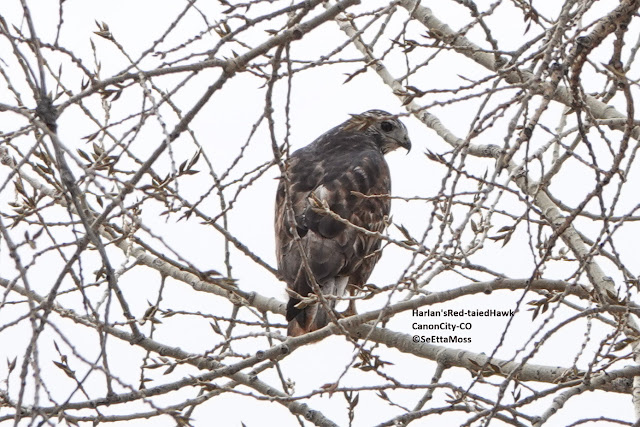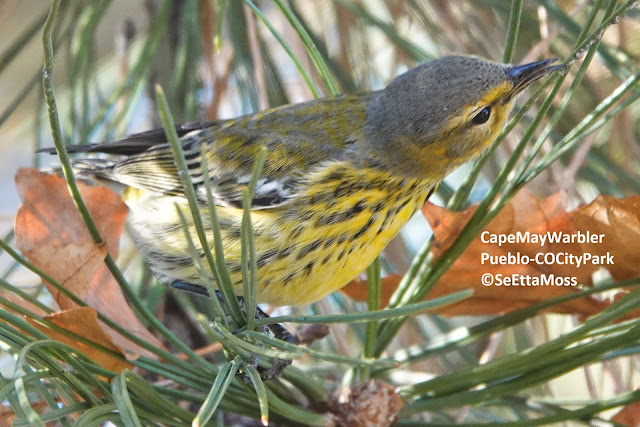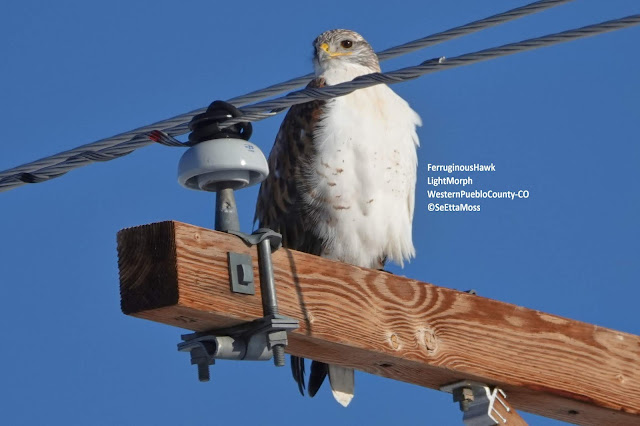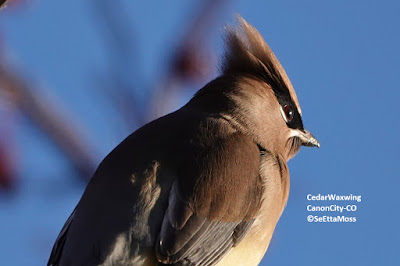Yellow-bellied Sapsucker in Canon City
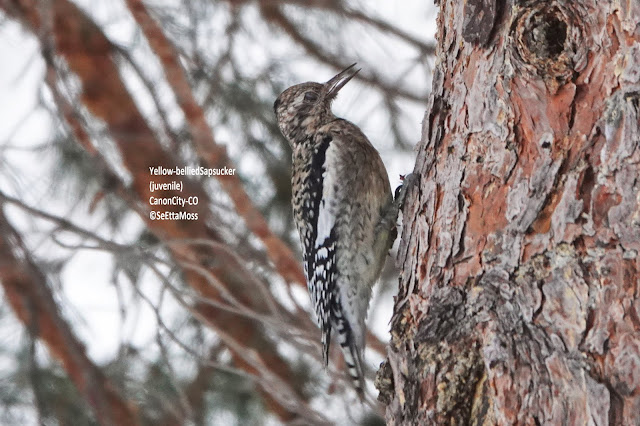
I found this Yellow-bellied Sapsucker, my first of the season for this species, today in Canon City. While we usually have several Williamson's Sapsuckers for the fall/early winter season, we usually get at least one Yellow-bellied Sapsucker and in most years a Red-naped Sapsucker. This sapsucker is in juvenal plumage: white wing stripe, indistinct black and white striped face, and this one shoes the beginnings of the red crown found on this species. SeEtta
